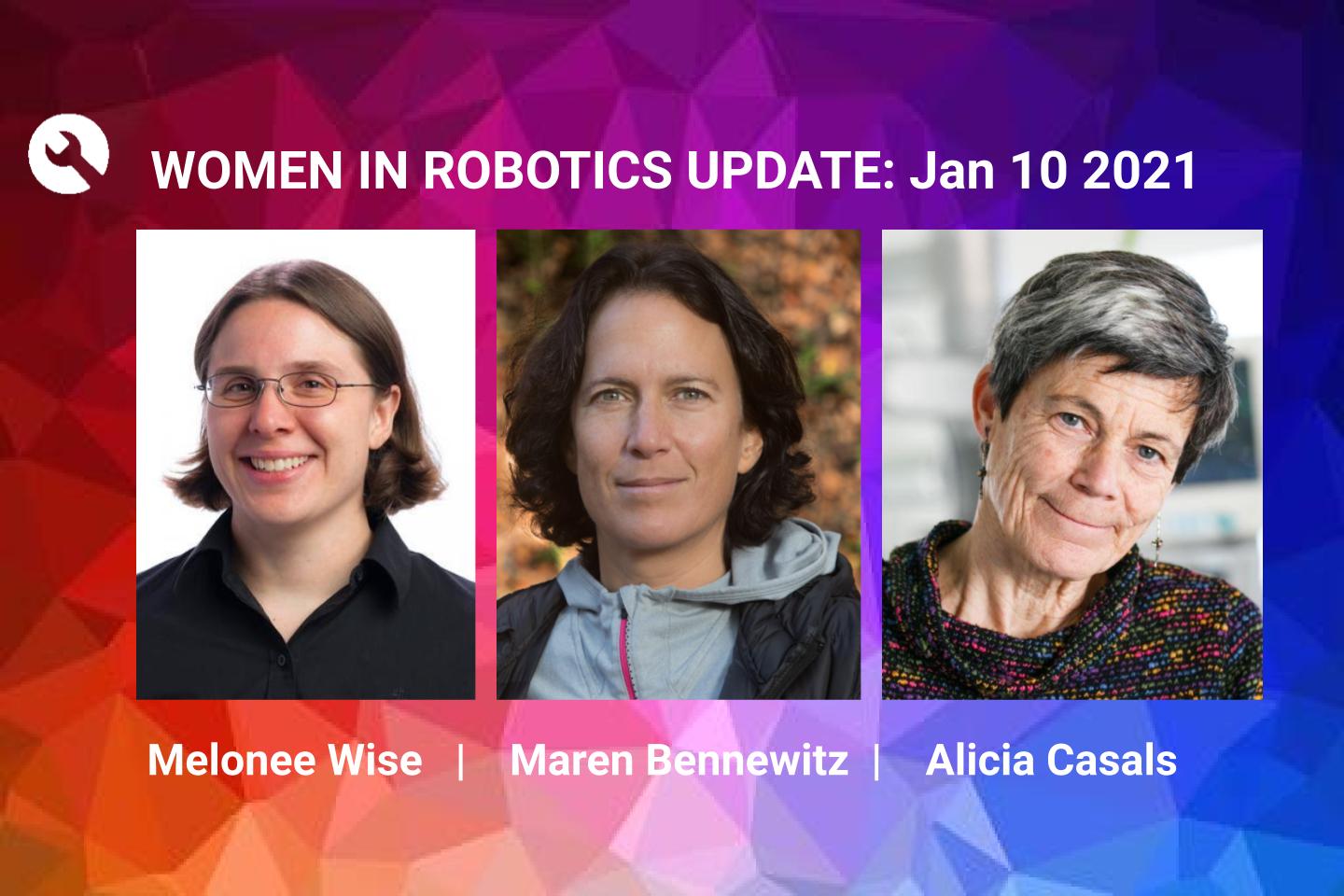Samsung robot feeds you and helps with the laundry
IEEE RAS Soft Robotics Podcast with Hod Lipson: Can we design self-aware robots?
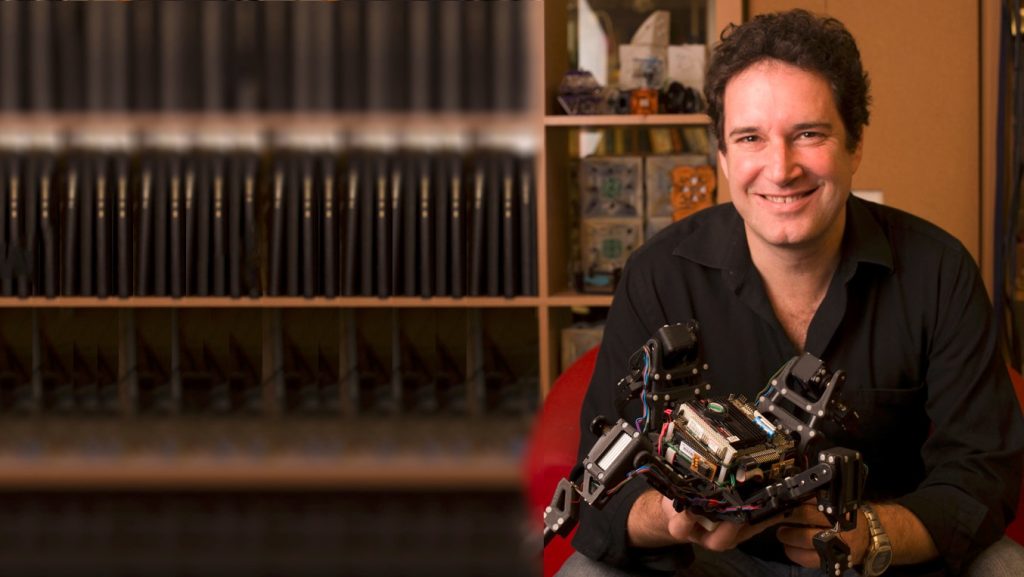
Interesting discussion with Hod Lipson, head of Creative Machines Lab, Columbia University in New York. Can robots be self-aware? Can they design other robots and self-repair? Why should we evolve robots to do tasks that animals do so well? Why don’t we have useful autonomous robots in the real world yet? Find out Hod’s answers to these questions and updates on VoxCAD development for designing and simulation of soft robots in this episode of the IEEE RAS Soft Robotics Podcast.
What’s more, Hod gave his personal advice to roboticists being interviewed for an assistant professorship and to 1st-year robotics PhD students looking for a thesis topic, and he also commented on his approach to the ethical dilemma of military funding scientific research. I hope you enjoy listening to the episode! You can check Hod Lipson’s portfolio here: https://www.hodlipson.com/
You can also listen to this podcast on Spotify and Apple Podcasts, and explore support options on Patreon.
Examples of Rescue Robotics Changing Emergency Response Times
CES 2021: The robots are still coming. These are some of the best ones on the way
Incremental Steps to Creating Value With Industrial Data Analytics
Pandemic’s robot ‘heroes’ highlight their value at tech show
Women in Robotics Update: Melonee Wise, Maren Bennewitz, Alicia Casals
Introducing the seventh post in our new series of Women in Robotics Updates, featuring Melonee Wise, Maren Bennewitz and Alicia Casals and from our first “25 women in robotics you need to know about” list in 2014. These women have pioneered foundational research in robotics, created organizations of impact, and inspired the next generations of robotics researchers, of all ages.
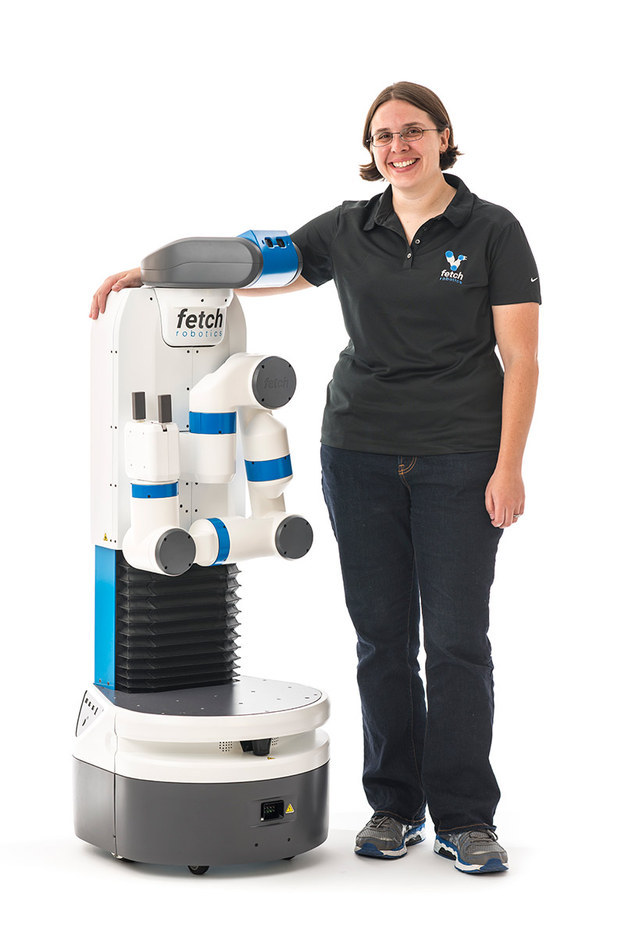 |
Melonee Wise
CEO of Fetch Robotics
Melonee Wise(featured in 2014), now a CEO of Fetch Robotics has been designing, building, and programming robotic hardware for an autonomous boat, autonomous car, personal robot platforms, battlebots, and several low cost platforms since 19 years. At Fetch Robotics, she and her team provide the best AMR or Autonomous Mobile Robot solutions for the logistics industry through a fleet of products that provide ‘On Demand Autonomy’. Fetch Robotics was also the first winner of Overall Excellence Award in the Silicon Valley Robotics ‘Good Robot’ Industry Awards in 2020. Wise was recognized by Silicon Valley Business Journal as 40 under 40 and by Technology Review TR35 as a ’40 female founders who crushed it’ in 2016. She also received the Women of Influence in 2017 Silicon Valley Business Journal. She has more than 4 Patents and more than 20 published articles. Wise received the Distinguished Alumni Award from University of Illinois at Champaign Urbana in 2016. After the ceremony Wise shared that, “Women in Engineering is definitely a small community. There’s only so many women in engineering and there’s only so many engineers in robotics. So you’re looking at a pretty thin cross-section of a population that is not as diverse as we all hope it would be. And so sometimes it can be very challenging. But I actually think it’s harder as a start-up entrepreneur to be a woman than it is to be potentially a roboticist.” |
 |
Maren Bennewitz
Professor at the University of Bonn
Maren Bennewitz (featured in 2014) is a professor for humanoid robots and vice rector for IT at the University of Bonn and her research focuses on robots acting in human environments. She and her team have developed several innovative solutions for robotic systems co-existing and interacting with humans such as probabilistic techniques for navigation with humanoid and wheeled robots, as well as for reliably detecting and tracking humans from sensor data and analyzing their motions. She is also on the Executive Board of the Cluster of Excellence PhenoRob and the Center for Mind Research since 2019.
Bennewitz was Inspired by the participation in the Minerva project, led by Sebastian Thrun back in 1998, where she and the team programmed a robot to act as a museum tour guide in the National Museum of American History. ” My favorite thing is doing experiments on real robots evaluating novel developed techniques,” says Bennewitz. “Which is also one of my least favorite things since it is so time-consuming to get the algorithms running on real-world systems with real sensor data, even when the algorithms worked reliably in simulation before.” |
 |
Alicia Casals
Professor at Universitat Politècnica de Catalunya (UPC)
Alicia Casals (featured 2014) is professor at Universitat Politècnica de Catalunya (UPC) doing her research in medical robotics, mainly in the surgical field, and has been collaborating with companies and other non-academic institutions to find the solutions to the challenges that come with Integration of robotics to real situations. She has been recently cofounder of two companies in the robotic medical field. Casals received the “Nit de la Robòtica” award as recognition of her research and professional career, awarded in 2019 by the Industrial Engineers of Catalunya. She has been active as referent model that drives scientific and technical vocations amongst young women while taking into account the human side within the area. Casals is significantly involved with the IEEE, IEEE Robotics and Automation Society and IEEE Engineering in Medicine and Biology (IEEE RAS and IEEE EMBS), European Robotics Network (EURON), and founded the Spanish Robotics Chapter. In this 2015 Oral History for Engineering and Technology History Wiki, Casals describes what got her started in robotics, her projects, her startup experience and her message to all the young roboticists, “It’s important to think on the ethics of robotics, on the efficiency of the work, and so trying to really solve what the problem is, because it’s a very wide area, so it’s easy that the projects solve things but don’t reach anything in particular. But because robotics has a wide field of applications, and they can be very good and can be used as an assistant tool. We are working in the medical field, so we basically work in robotics for aiding people. So that is a fantastic area of research we consider.” |
Want to keep reading? There are 180 more stories on our 2013 to 2020 lists. Why not nominate someone for inclusion next year!
And we encourage #womeninrobotics and women who’d like to work in robotics to join our professional network at http://womeninrobotics.org
Robot displays a glimmer of empathy to a partner robot
#CYBATHLON2020GlobalEdition winners of the powered leg prosthesis race (with interview)
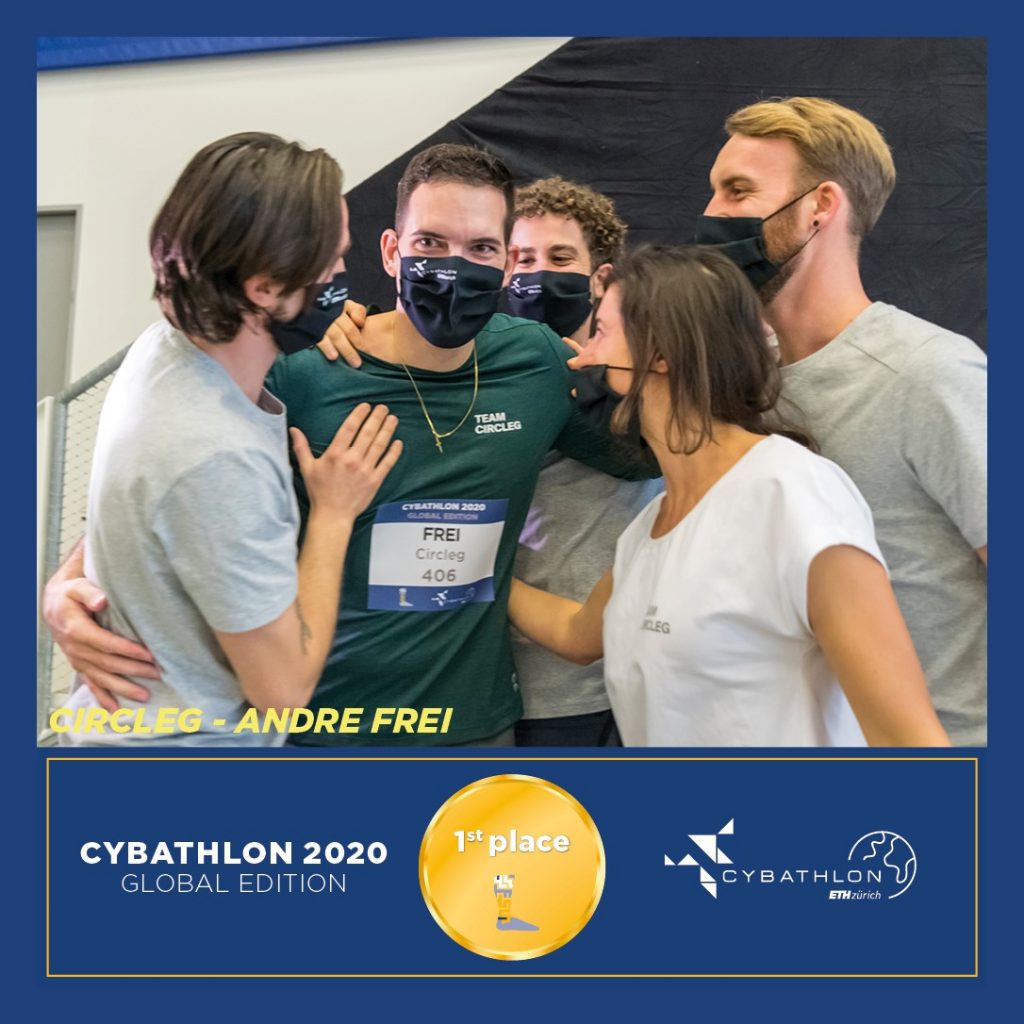
Finishing this series of CYBATHLON 2020 winners, today we feature the victory of the startup Circleg from Switzerland. We also had the chance to interview them (see the end of this post).
In this race, pilots wearing a leg prosthesis from five teams had to complete a circuit using any kind of active/passive prosthesis. In the CYBATHLON organisers’ own words, “passive prostheses are primarily for cosmetic purposes and have few functional characteristics. So-called active leg prostheses can be controlled accurately thanks to innovative technologies. After a leg amputation, motorised prostheses allow users to do things like climb stairs more easily and walk up and down sloped surfaces successfully.” The challenge for the pilots was to complete the following tasks:
(1) Balancing cups and plates while sitting down and standing up to test leg strength in a confined space.
(2) Overcoming hurdles while carrying apples on two plates from one end to the other to test their bending ability and movement control of the knee joints.
(3) Transporting two buckets on a beam to test their ability to balance while moving forwards and backwards.
(4) Transporting balls and boxes to the other side of the stairs with only one foot on each step to test their ability to bend the knee joint, the motor power on the stairs, the precision of steps, their stability, all with limited vision.
(5) Crossing a tilted path in both directions while carrying plates with apples to test the bending ability and angle control of the knee and ankle joint.
(6) Balancing a plate with apples while ascending and descending a ramp to test the ability to bend knee and ankle joints, and their bending stability and motor power at the ramps.

As with other disciplines, the top three races were very tight. Team Circleg with pilot Andre Frei completed the circuit in 2m 43s, giving them the gold medal. Only five extra seconds did take the Swiss silver medalist team, NeuroLegs with pilot Stefan Poth. The bronze medal went to the Polish team Contur 2000 with pilot Adrian Bak, finishing the race in 2m 57s. Here’s a summary of the races of the top 4 finalists:
You can see the results from the rest of the teams in this discipline here, or watch the recorded livestreams of both days on their website.
Interview to Simon Oschwald – Co-founder of Circleg
We had the pleasure to interview Simon Oschwald, one of the co-founders of the startup Circleg. Simon studied Industrial and Product Design at the Zurich University of the Arts.
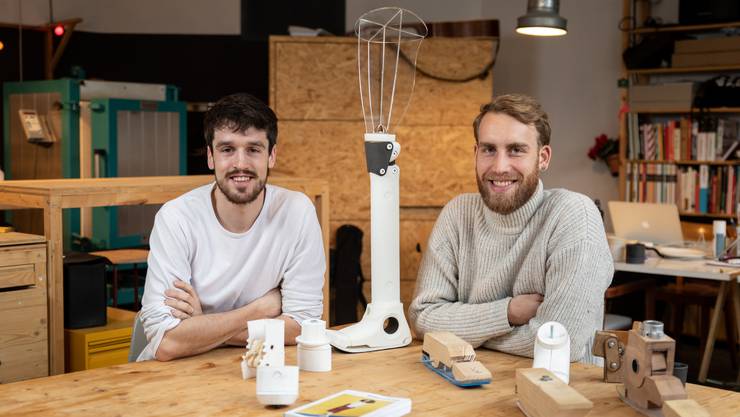
D. C. Z.: What does it mean for your team to have won in your CYBATHLON category?
S.O.: To win the prosthetic leg race at the Cybathlon exceeded all our expectations! Participating in the Cybathlon was a huge milestone for our team and a great opportunity to present the Circleg and our vision on this global stage. It was important for us to be able to show that the Circleg, with its functionality, can support amputees for the various challenges they face in everyday life. Our pilot Andre has now definitely proven this by winning the Cybhatlon race! The performance of the Circleg at the Cybathlon 2020 is also a confirmation that we are on the right track with the development to ultimately achieve our vision of Freedom of Mobility for everyone. We are thrilled!
D. C. Z.: And what does it mean for people with disabilities?
S.O.: I hope that many Amputees worldwide will see the performance of the Circleg at the Cybathlon as a sign that even with limited financial means it is possible to achieve freedom of mobility. Together we can realize with Circleg a holistic and sustainable prosthetic care for the majority of amputees worldwide. See it as a promise from our side that we will give everything to turn this vision into reality!
D. C. Z.: What are still your challenges?
S.O.: There are quite a few: The transformation of Circleg Zero into a mass product, the development of the local production chain and, finally, the implementation of our business model. A sustainable prosthetic supply does not only consist of a functioning product, but also requires locally functioning production, high-quality support, repair and service facilities and appropriate financing mechanisms. With the Circleg we address all these issues an our interdisciplinary is extremely motivated to tackle these challenges!
Innovative Manufacturing Approach Reduces Costs and Optimizes Electrification Time to Market
Science Magazine robot videos 2020
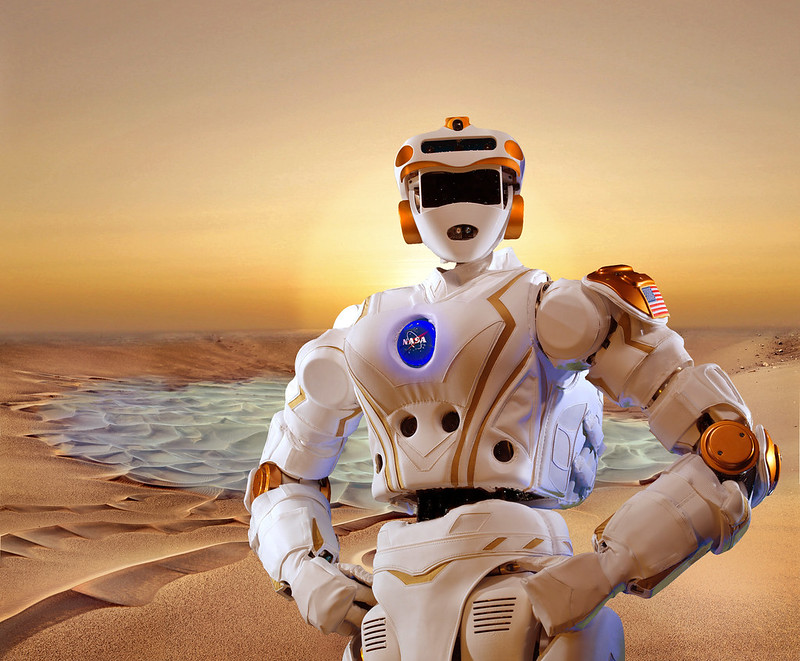
Did you manage to watch all the holiday robot videos of 2020? If you did but are still hungry for more, I have prepared this compilation of Science Magazine videos featuring robotics research that were released during last year. Enjoy!
These ‘beetlebots’ keep flying, even after crashing into poles
What if the folding wings of beetles could help robots navigate narrow places by not being affected by crashes? You can read a bit more here, and see the research article here.
Magnetic spray transforms inanimate objects into mini-robots
Researchers developed an iron-based spray that sticks to surfaces like origami paper or cotton thread, and turns objects into tiny robots that could be maneuvered inside our bodies for future biomedical applications. You can read a bit more here, and see the research article here.
Speedy drones count Antarctic penguin colonies in record time
Reducing the amount of time that it takes to count penguins in Antarctica is crucial when you have to survive its extreme weather conditions. Researchers developed a new algorithm for multiple drones that cut the time from two days to three hours. You can read the story here.
Mosquito-inspired drone dodges obstacles, thanks to air-pressure sensors
By taking inspiration from the way some mosquitoes use changes in air flow to detect close objects, researchers created a sensor that can be fitted into flying robots to avoid crashes even when objects can’t be seen in the dark. You can read a bit more here, and see the research article here.
How NASA’s new rover will search for signs of ancient life on Mars
On 18 February, 2021, a NASA’s rover launched last summer will land on Mars to help researchers understand the planet’s climatic history. You can read the story here.
These sweaty robots cool themselves faster than humans
Cooling systems are important for robots in the same way they are for us. Indeed, researchers were inspired by the human best cooling system: sweat. You can read a bit more here, and see the research article here.
Swarm of drones flies through heavy forest—while staying in formation
Maintaining connectivity while avoiding crashes during outdoor navigation is a difficult challenge for robots flying through forests. Researchers found the way to ease this task. You can read a bit more here, and see the research article here.
